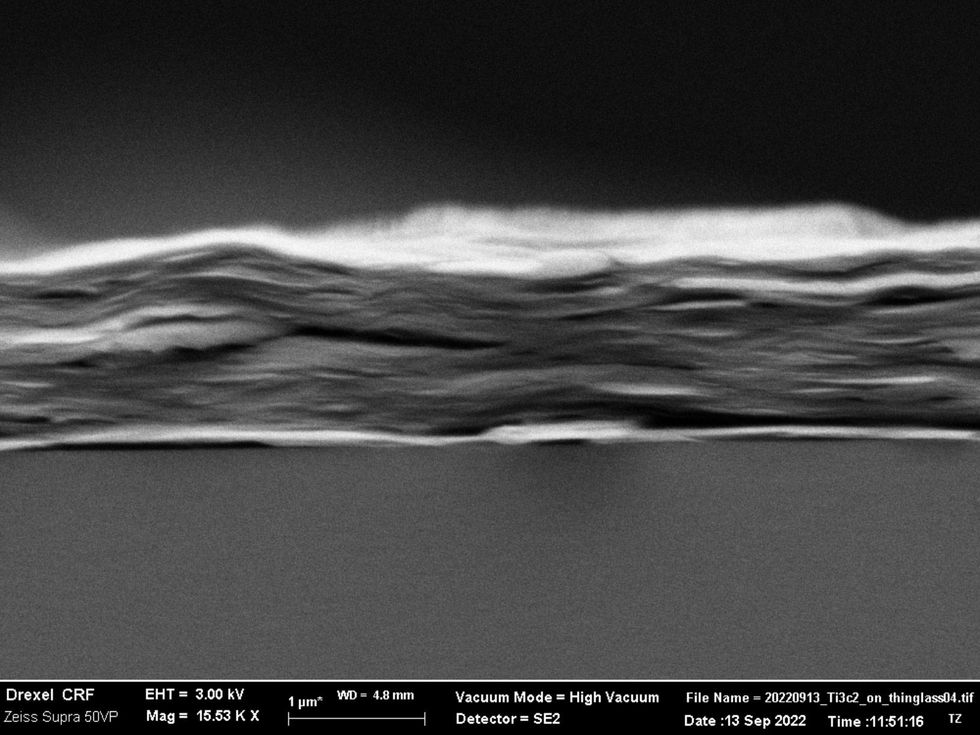
Advanced new Faraday cages—the metal mesh enclosures that can block wireless signals—can also be switched on and off for reversible protection against noise, a new study finds.
In addition, these new shields can be easily fabricated through a technique akin to spray-painting, which could help them find use in electronics, researchers say.
Similarly to how window blinds can help adjust how much visible light enters a room, engineers want dynamic control over the electromagnetic waves used in wireless communications. This ability would let devices receive and transmit signals when desired but also protect them against electromagnetic interference, such as static and jamming, and hide from being spied on.
However, developing thin films that can tunably shield against electromagnetic interference is challenging when it comes to electromagnetic wavelengths that are much longer in scale than the materials used in the coatings—for example, microwaves with frequencies measured in gigahertz. Coatings that can shield against electromagnetic interference typically only provide static protection.
Previously, researchers came up with foams they could mechanically compress or decompress to dynamically control the reflection or absorption of microwaves. However, these foams are several millimeters thick, hindering their potential use in microchips.
Now, using materials a few atoms thick discovered just over a decade ago, scientists have created shields less than a micron thick that can block microwaves in an electrically switchable manner.
“This is the first demonstration of dynamic electrical modulation of electromagnetic interference shielding,” says study senior author Yury Gogotsi, a materials scientist at Drexel University in Philadelphia.
In the new study, researchers investigated two-dimensional materials known as MXenes, which are made of materials abundant on Earth’s surface. Previous research has found that MXenes may find use in a wide range of applications, such as energy storage, printable electronics, spray-on antennas, flexible transparent electrodes, water purification, lubricating space rovers, light-emitting quantum dots, and sensors. “There are more than 50 reported and more than a hundred compositions possible,” Gogotsi says.
MXenes each possess a structure like a sandwich. The middle layer is composed of atoms of a conductive metal and either carbon, nitrogen, or carbon and nitrogen. On either side of that middle layer is an oxide layer.
Current shields against electromagnetic interference are made of highly electrically conductive materials that can reflect electromagnetic waves. These include metals and carbon materials such as graphene. However, it’s generally not possible to alter the electrical conductivity of metals, and graphene can only have its electrical conductivity modified so much by chemical means before it loses its shielding capability.
MXenes are highly conductive, and recent work found they could be even better shields against electromagnetic waves than metals and graphene. Now the researchers show that when they combine MXenes with electrolyte solutions, they could temporarily electrically make these combinations transparent to electromagnetic radiation.

A cross-section of MXene film used in the study. The film is about 50 to 100 times thinner than a human hair. Drexel
An electric field can make ions flow within each film to expand or compress the space between its layers. This in turn can tune its conductivity and shielding properties.
“Properties of MXenes can be modulated similar to properties of semiconductors, by applying a small potential,” says Gogotsi, who helped discovered MXenes in 2011.
In experiments, by applying less than a volt, the scientists found they could quickly and reversibly switch how much these films were either transparent to or shields against the X-band (8.2 to 12.4 GHz) the most common radar frequency range. These films could sustain their performance through more than 500 cycles of discharging and recharging.
In the future, the researchers aim to increase the strength of the change in shielding and explore blocking other wavelengths of light, such as infrared, terahertz and radio frequencies.
“There is no reason to believe that a couple of MXene tested are the best ones for this application—we need to search for the best MXene,” Gogotsi says. “There is plenty of room for improvement.”
The scientists detailed their findings online 16 January in the journal Nature Nanotechnology.
Source: IEEE Spectrum Telecom Channel
